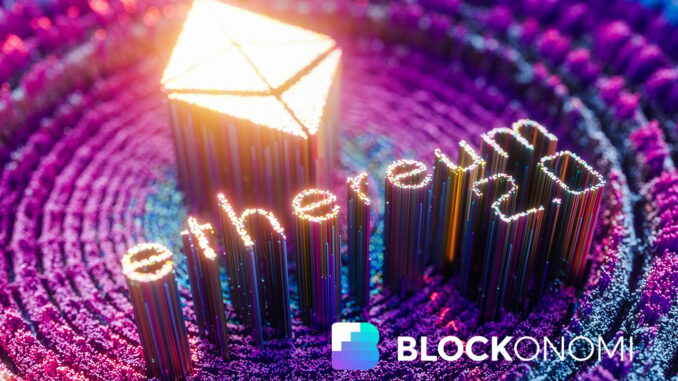
Shanghai, the next major upgrade of Ethereum post-Merge, now has a testnet.
Recently, the Ethereum Foundation JavaScript team announced the launch of the Shandong testnet in preparation for its upcoming Shanghai upgrade. This is the first major upgrade of the network after the Merge was activated in September.
The Merge closed the whole episode of Proof-of-Work consensus and kick-started the era of Proof-of-Stake.
While no specific date for the Shanghai upgrade was attached to the announcement, the team referred to the next 6 to 12 months after the Merge as originally planned.
It is also the plan for the withdrawal of staked ETH. After the Merge took place, sETH remained locked on the Beacon Chain until the Shanghai update.
“This is an experimental pilot network that is being run in collaboration with EF DevOps that is activating a set of EIPs set in Shanghai for early testing for customers,” the EF JavaScript team said in the announcement.
Welcome to Shandong
The Shandong testnet introduces six Ethereum Improvement Proposals (EIPs), including EIP-3540 – EVM Object Format (EOF) v1, EIP-3651 – Warm CoinBase, EIP-3670 – Validation of EOF Code, EIP-3855 – PUSH0 Instruction, EIP-3860 – limit and counter start code, and EIP-4895 – Beacon chain push withdrawals as operations.
EIP-3540 will be the center of attention in the coming upgrade. The upgrade proposed will separate code and data in the Ethereum Virtual Machine (EVM), enabling a much smoother validation process during the growth of the ecosystem.
In an interview with CoinTelegraph, Galen Moore, content lead at Axelar said: “EIP 3540 is the most significant upgrade proposed for Shanghai. It’s a further step toward interoperability within the Ethereum ecosystem.”
EIP-4895 is another major highlight of the Shanghai upgrade. It allows those who have participated in staking ETH on Ethereum 2.0 contracts to withdraw funds, as well as staking rewards.
Ethereum activated ETH 2.0 staking in November 2020 to serve The Merge. At the time of writing, the amount locked in here exceeds 14.2 million ETH, which is approximately $19 billion.
EIP-4844 is another significant proposal that will propose a proto-danksharding technique to help lower transaction fees on Layer-2 rollups.
The complete list of EIPs associated with the Shanghai upgrade will be finalized at the next Ethereum developer meeting.
Ethereum price has been on an upward trend after a turbulent week in reaction to the CPI release. In addition, this week’s economic calendar indicates that the markets will be quite calm.
It is feasible because there have been no significant trigger events recently. During this period, Ethereum will probably attempt to stage a comeback.
Post-Merge Pros and Cons
The absence of mining activities after the Merge has turned Ethereum into a more energy-efficient network. Less energy consumption, on the other hand, cuts down validators’ reward on the PoS blockchain, creating deflationary pressure on ETH when combined with the EIP-1559 coin-burning mechanism.
The new mechanism also helps the world’s second-largest blockchain cut electricity consumption by more than 99%. CryptoQuant reported that the hashrate and the mining difficulty on the Ethereum network were reduced to zero following the Merge.
However, it’s important to set the right expectation since the Merge either cuts down gas fees on the blockchain or accelerates transaction speed.
Improvements in these aspects will only be clarified when the sharding solution is implemented in The Surge, another important update that is underway in parallel with The Merge.
Other updates such as The Verge, The Purge, and The Splurge are also being finalized by Ethereum’s team to make the blockchain faster, more decentralized, and more accessible to the masses.
While holding several great promises, the shift to PoS poses a threat to the censor-resistant capability of the network.
There have been an excessive number of relays between validators and block producers that follow strictly to the legal actions ordered by the Office of Foreign Assets Control (OFAC).
The body of the United States Department of the Treasury has the authority to put restrictions on particular financial dealings.








Kommentar hinterlassen